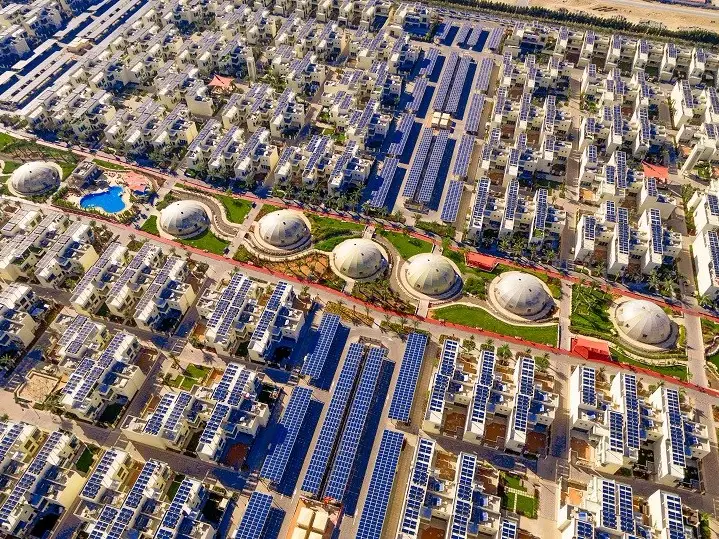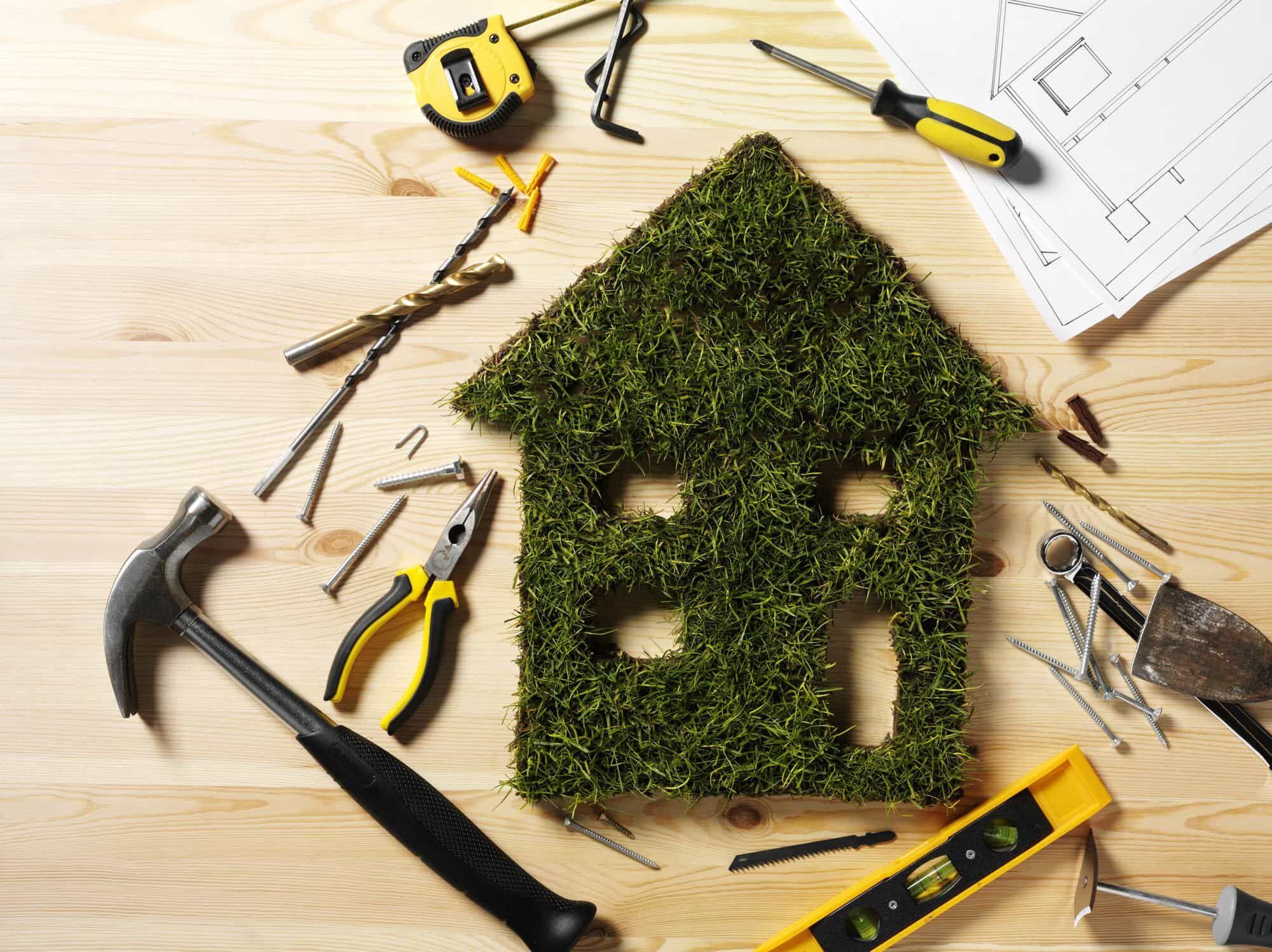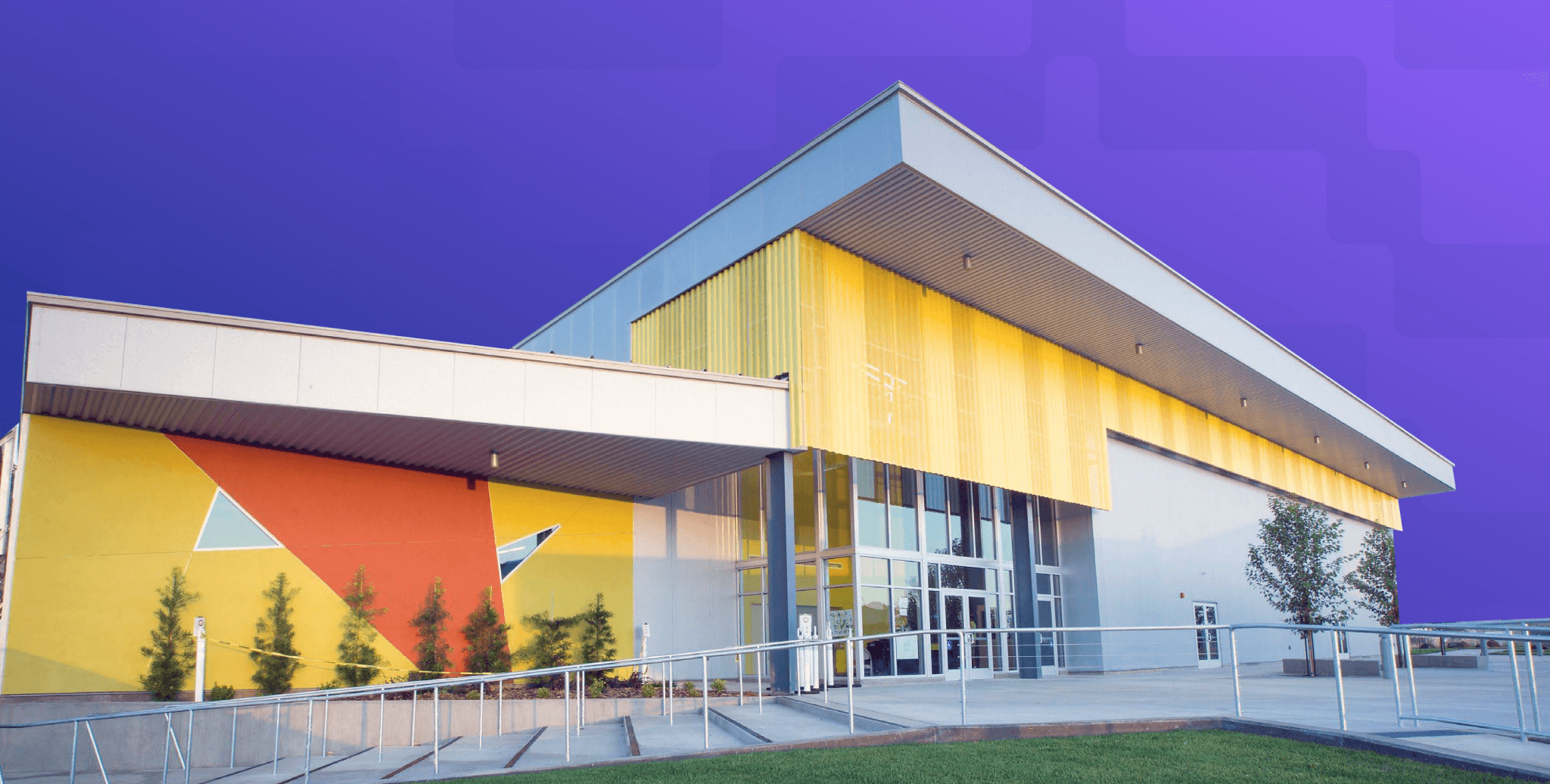Top 10 Sustainable Home Design Trends (2025)
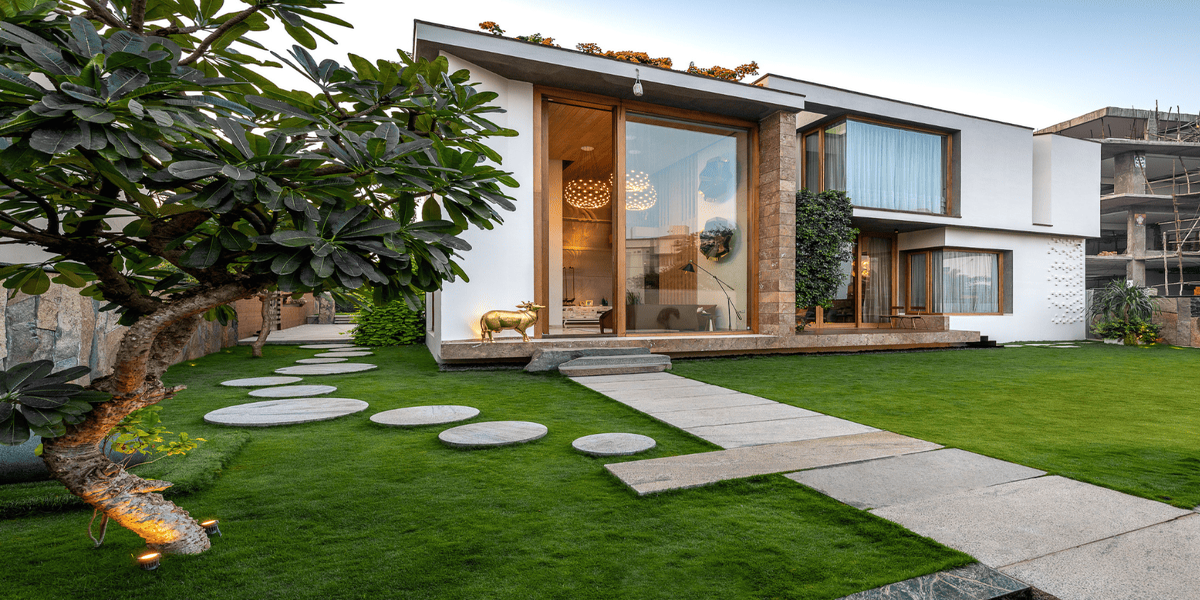
Table of Contents
The built environment contributes to 30% of global greenhouse gas emissions and accounts for one-third of the global consumption of raw materials, energy, and water. In the past few decades, designers and architects have realised the importance of using sustainable home design strategies to combat globally pressing issues such as climate change, global warming, etc. In this blog, we will find out what a sustainable home design is and also look at ten examples of sustainable home architecture trends.
What is a sustainable home design?
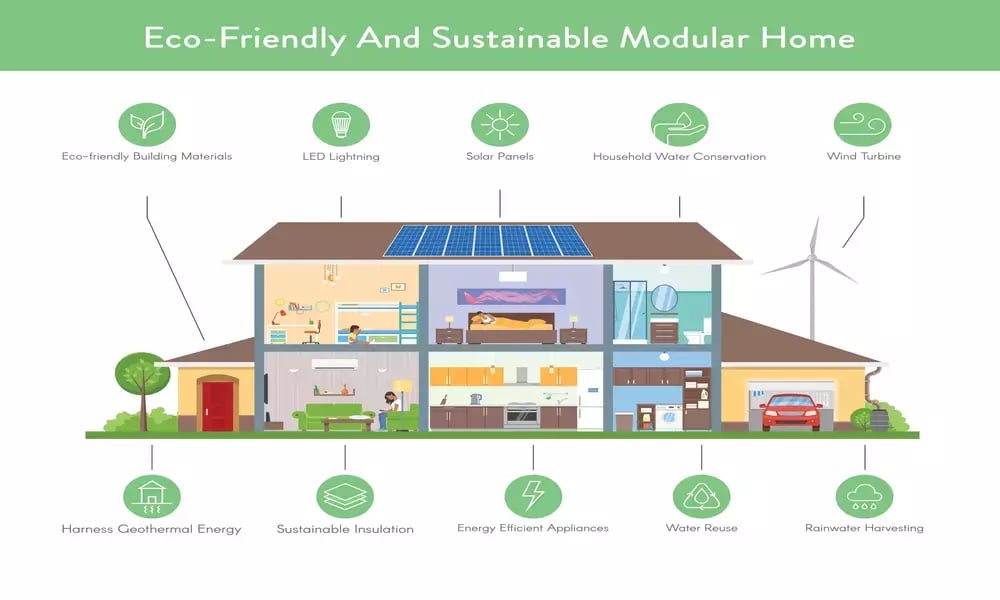
A sustainable home design is created using methods that reduce its impact on the environment. This is achieved through the use of eco-friendly materials in buildings, energy-efficient systems and appliances, and renewable energy sources.
Different organisations across the world have come into being as relevant sources that help define and regulate green building ratings. These take into account the environmental performance and sustainability of a building. Some of these are - LEED (Leadership in Energy and Environmental Design), BREEAM (Building Research Establishment Environmental Assessment Method), Green Star, and GRIHA (Green Rating for Integrated Habitat Assessment). Below, you can find a list of key features for adopting GRIHA ratings.
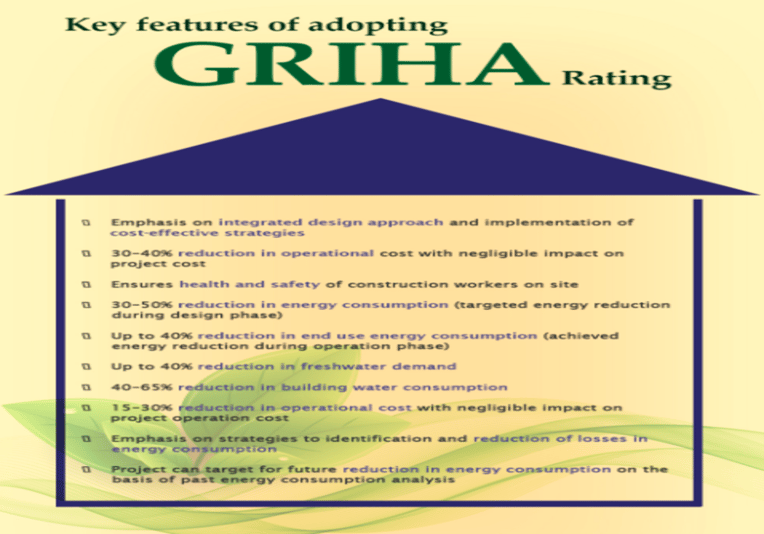
A good example of an eco-friendly home design and sustainable home architecture would be the Royal Orange County in Pune. The apartments feature sustainable home design strategies such as solar rooftops, rainwater harvesting systems, sewage treatment plants, and organic waste composters. It is one of the first residential projects in India designed targeting a 5-star GRIHA rating. However, such houses are few and far between.
Interested in building a career in sustainability?
Check out: Building a Career in Sustainable Architecture: Advice from a Sustainability Expert
Now that we have understood what a sustainable home design is, let us find some examples of sustainable design trends to ensure you have an eco-friendly house.
Also Read: 10 Sustainable Architecture Firms In Chennai For Your First Step Into Architecture Career
4 Common Features of Sustainable Design
Sustainable design has become increasingly important in our current times, driven by the urgent need to address environmental challenges and promote a more responsible approach to development. Here are four common features of sustainable design that are relevant today:
1. Energy Efficiency: Energy efficiency is a fundamental aspect of sustainable design. Building design plays a crucial role in reducing energy consumption through strategies such as passive solar design, proper insulation, energy-efficient lighting and appliances, and the incorporation of renewable energy sources like solar panels or wind turbines. Efficient energy use not only reduces greenhouse gas emissions but also leads to significant cost savings over a building's lifetime.
2. Water Conservation: With increasing water scarcity and climate change affecting water supplies, sustainable design emphasizes water conservation measures. This includes the use of low-flow fixtures, rainwater harvesting systems, greywater recycling, and the incorporation of drought-resistant landscaping. Additionally, efficient water management techniques, such as stormwater management and on-site water treatment, help to reduce the strain on municipal water systems and promote water sustainability.
3. Sustainable Materials: The selection and use of sustainable materials are key features of sustainable design. This involves choosing materials that are renewable, locally sourced, recycled or have low embodied energy (the energy required to produce and transport the material). Examples include bamboo, reclaimed wood, recycled concrete, and earth-based materials like rammed earth or adobe. Additionally, designers aim to minimize the use of materials that have a high environmental impact during their production or disposal.
4.Indoor Environmental Quality: Sustainable design prioritizes the health and well-being of building occupants by promoting indoor environmental quality. This includes strategies to improve indoor air quality through proper ventilation, the use of low-VOC (volatile organic compound) materials, and the incorporation of natural lighting and biophilic design elements (connecting buildings to nature). Additionally, acoustic comfort and thermal comfort are considered to create a healthy and productive indoor environment.
These four features of sustainable design not only contribute to environmental sustainability but also offer long-term economic benefits through reduced operational costs, increased occupant productivity, and enhanced resilience to environmental challenges. As society becomes more conscious of the need for sustainable practices, these design principles will continue to shape the built environment towards a more responsible and sustainable future.
10 Sustainable Global Home Design Trends
1. Use of Sustainable and Natural Materials

One of the best ways to make a sustainable home design is to opt for sustainable and recycled materials. Let us look at some examples of sustainable materials that you can use for your eco-friendly house.
- Flooring options: Bamboo and cork are eco-friendly material flooring options. These materials, as well as repurposed wood, can also be used in furniture, decor, and even as wall options.
- Wall options: These include sustainable materials like bamboo, recycled wood, rammed earth, hempcrete, and straw bales.
- Roofing materials: Some of the most commonly used sustainable roofing materials include recycled metal, clay or concrete tiles, natural slate, and wooden shakes or shingles. All of these sustainable roofing materials can reduce energy consumption and minimise environmental impact.
2. Prefabrication
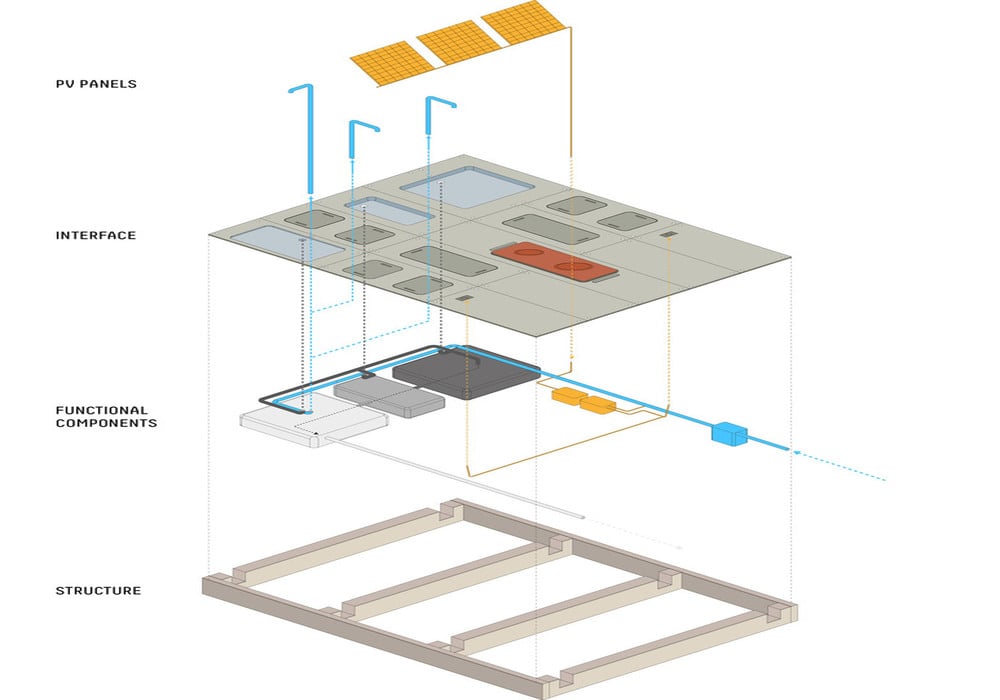
According to Green Business Certification, Inc., green buildings and prefabrication techniques are a great match for an eco-friendly house. Prefabricated houses have come a long way and serve as a good solution to the need for affordable and sustainable home designs. The approach focuses on assembling components of a structure in a factory or other manufacturing site, and transporting complete assemblies or sub-assemblies to the construction site where the structure is to be located. This is because modular construction helps cut down on construction costs and time. Other sustainability benefits of using this approach include reduced material waste, reduced disruption to the building site and surrounding community, safer working conditions, and reduced operational energy. A good example of this would be the prefabricated housing designed by Carlo Ratti Designs in rural Bangalore.
BIM is used extensively for prefabrication.
3. Reuse
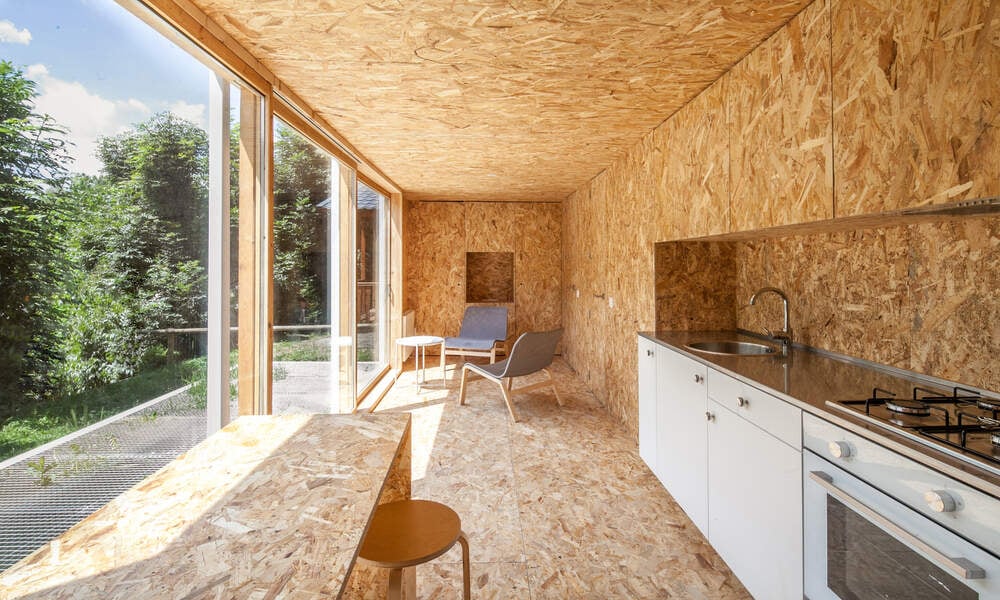
Reusing is all about repurposing or using materials that already exist rather than discarding them, which helps to reduce waste and conserve natural resources. For example, materials like reclaimed wood, old bricks, or metal scraps can be reused to create visually appealing features in eco-friendly houses.
One example would be the Weekend Shelter by Agora Arquitectura. Cork on the façade is combined with particle board in the interior design to achieve a thick thermal and acoustic protection. The material does not require maintenance, comes from sustainable forests, is completely recyclable, and avoids any thermal bridge.
4. Indoor Gardensa
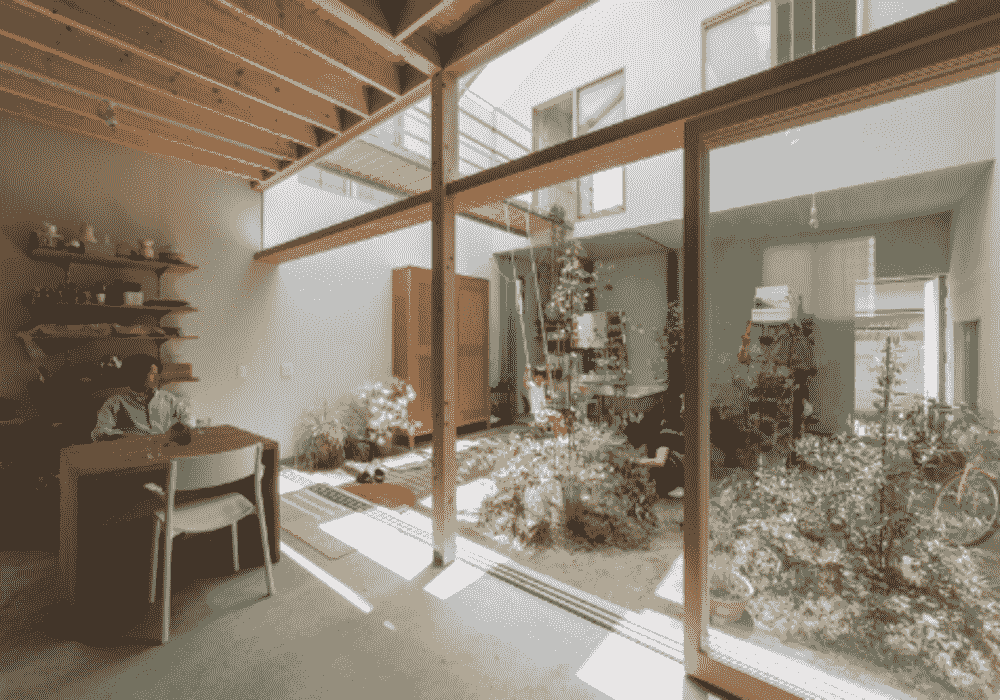
Indoor gardens aim to add aesthetic value to an eco-friendly house and also provide numerous environmental benefits. They improve indoor air quality by absorbing carbon dioxide and releasing oxygen. They also help to regulate humidity levels, making homes more comfortable to live in. Another benefit is that they can be used to provide a sustainable source of fresh produce (vegetables and herbs). This further helps reduce the carbon footprint of food transportation.
5. Solar Power
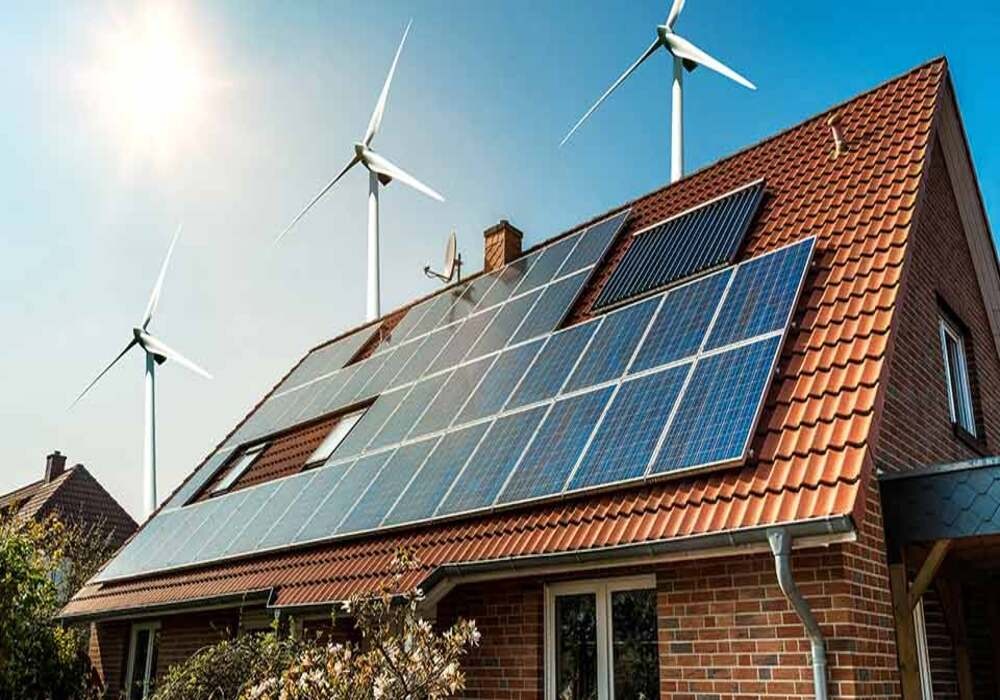
Solar power is a clean and renewable source of energy that harnesses the power of the sun to generate electricity. Solar panels can be installed on the roof of a home to generate electricity, which can power the home's appliances, lighting, and heating systems. This reduces the home's dependence on traditional energy sources and significantly lowers its carbon footprint.
It is a versatile and flexible design practice that can be incorporated into any sustainable home design, from small apartments to large eco-friendly houses. It is also a low-maintenance solution, with solar panels requiring very little maintenance or upkeep.
Check out: What is the Scope of Sustainable Architecture - and How to Build a Career in it?
6. Water Conservation Strategies

Water conservation is a crucial aspect of sustainable home design, and designing eco-friendly houses that utilise water conservation techniques can have a significant impact on the environment. According to the USGBC (U.S. Green Building Council), the three key components of water efficiency are reducing indoor potable water, reducing water consumption to save energy, and improving environmental well-being. Few conservation strategies include rainwater harvesting, greywater recycling, pressure reduction, and cooling towers.
Another way to conserve water in an eco-friendly home design is through the use of low-flow fixtures. Low-flow showerheads, faucets, and toilets can reduce a household's water consumption by up to 30%.
7. Green Walls and Roofs
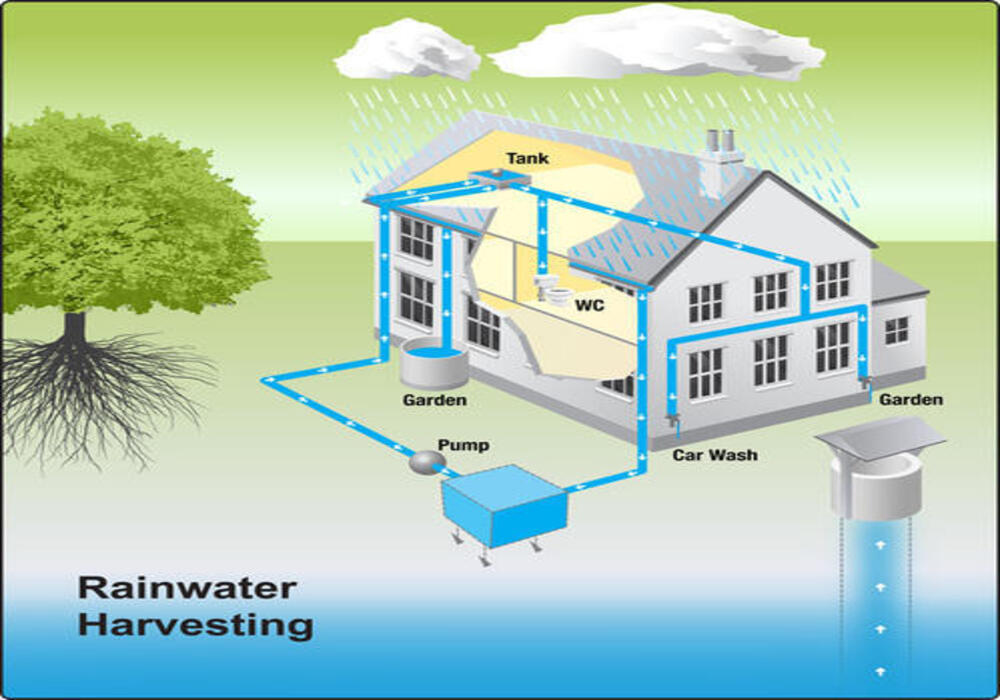
Green walls and roofs are structures that incorporate vegetation into the building, providing numerous benefits to, both, the environment and homeowners. They can help regulate a building’s internal temperature, reduce stormwater runoff, and mitigate the urban heat island effect. They also offer significant economic benefits, including a longer roof life and heating and cooling energy savings.
They also add unique and natural materials to a building and can help blend an eco-friendly house into its surroundings. Additionally, green walls and roofs can provide habitat for birds and insects, contributing to the local ecosystem.
8. Smart Home Strategies
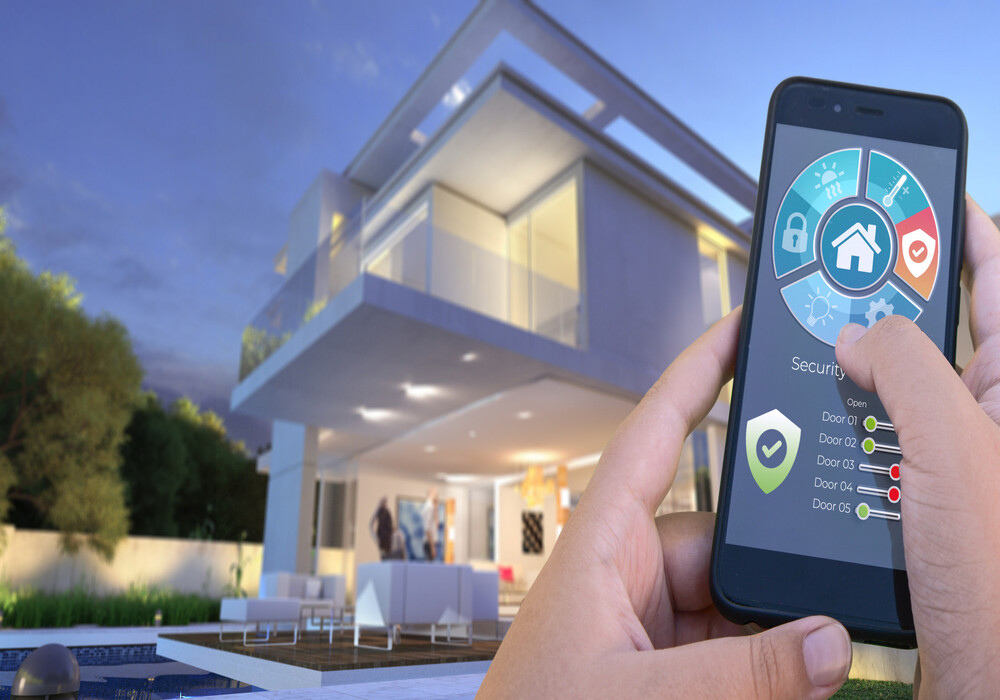
Smart and modern sustainable home designs use technology to allow the home’s systems and electronics to communicate with one another, be controlled by a schedule, and even be remotely activated from a smartphone or other web-enabled device. By implementing smart home and eco-friendly house strategies, homeowners can save money on utility bills and contribute to a healthier environment. Let’s find out how:
- Smart thermostats: These thermostats use artificial intelligence to learn a household's patterns and preferences, adjusting the temperature accordingly. This can help reduce energy consumption and lower heating and cooling costs.
- Smart lighting: These systems use motion sensors and timers to ensure that lights are only on when they are needed, reducing energy consumption and saving money on electricity bills.
- Water consumption monitoring: Smart irrigation systems can be programmed to water plants only when necessary, reducing water waste. Additionally, smart water metres can track household water usage, making it easier to identify leaks and reduce consumption.
9. Energy-efficient appliances
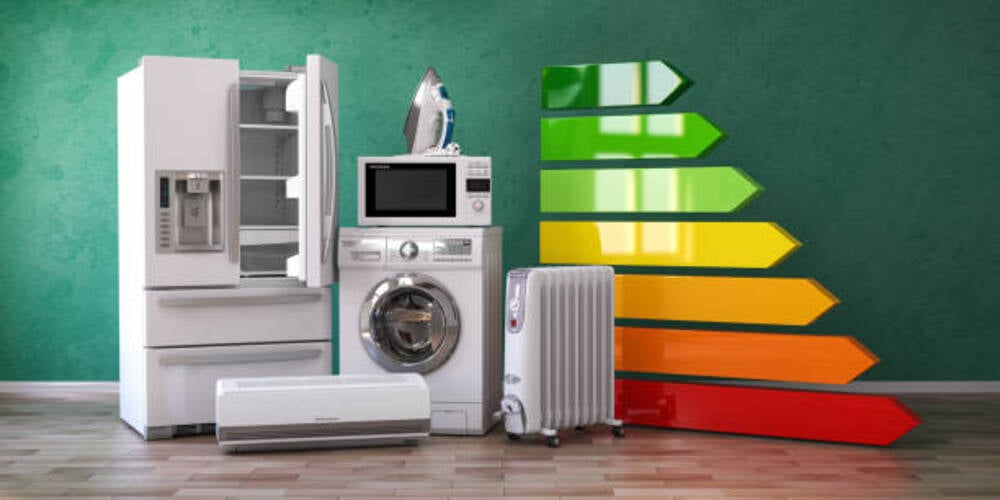
These days, household appliances remain major contributors to harmful greenhouse gases. Energy-efficient appliances are an innovative and effective way to design homes that prioritise sustainability. Below, let us look at some benefits of using energy-efficient appliances in your eco-friendly houses:
- They help prevent greenhouse emissions.
- They help save water.
- They help save money.
- They help reduce the carbon footprint.
10. Multi-functional spaces
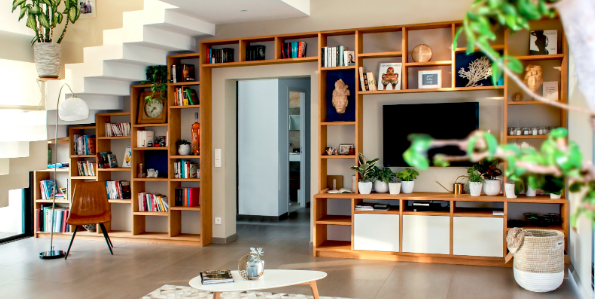
By incorporating multi-functional spaces into eco-friendly home designs, homeowners can maximise the use of their living spaces, reduce the amount of space needed, and minimise the environmental impact of their eco-friendly houses. This can be achieved by:
- Using convertible furniture: Convertible furniture, such as sofas that turn into beds or tables that fold up, can be used to create spaces that serve multiple purposes, such as a guest bedroom that doubles as a home office.
- Use of open floor plans: Open floor plans allow for spaces to be used for multiple purposes, such as a kitchen that doubles as a dining area and gathering space.
Multipurpose spaces: They can help homeowners reduce the size of their homes, minimising their environmental impact and reducing their carbon footprint.
In Conclusion
As the world faces pressing challenges from climate change, there is a renewed interest in modern sustainable home designs. With a focus on energy efficiency, eco-friendly materials, and innovative technology, eco-friendly houses not only benefit the environment but also improve the health and well-being of their occupants. As we move towards more modern sustainable home designs and a green future, it is essential to incorporate these trends into home design and construction to reduce our impact on the planet.
So that’s about it! Head to our Resources page if you want to get more insights on AEC careers, software and tools, and industry trends.
Well, did you know that buildings like these can be made with sustainable designs and high efficiency in today’s time with the use of technologies like Computational Design? If you are an architect willing to learn, here’s something that might interest you:
Novatr offers you a Master's Computational Design Course that will help you understand computation in different design fields with industry workflows, advanced tools for a concrete foundation in computational design. Learn high-performance computational building information modelling (BIM) and building analysis via a live industry project. Bag opportunities along with professional certification, endless career possibilities and upskilling.

 Thanks for connecting!
Thanks for connecting!


-2.png?width=767&height=168&name=MCD%20B%20(Course%20Banner)-2.png)
.png)

